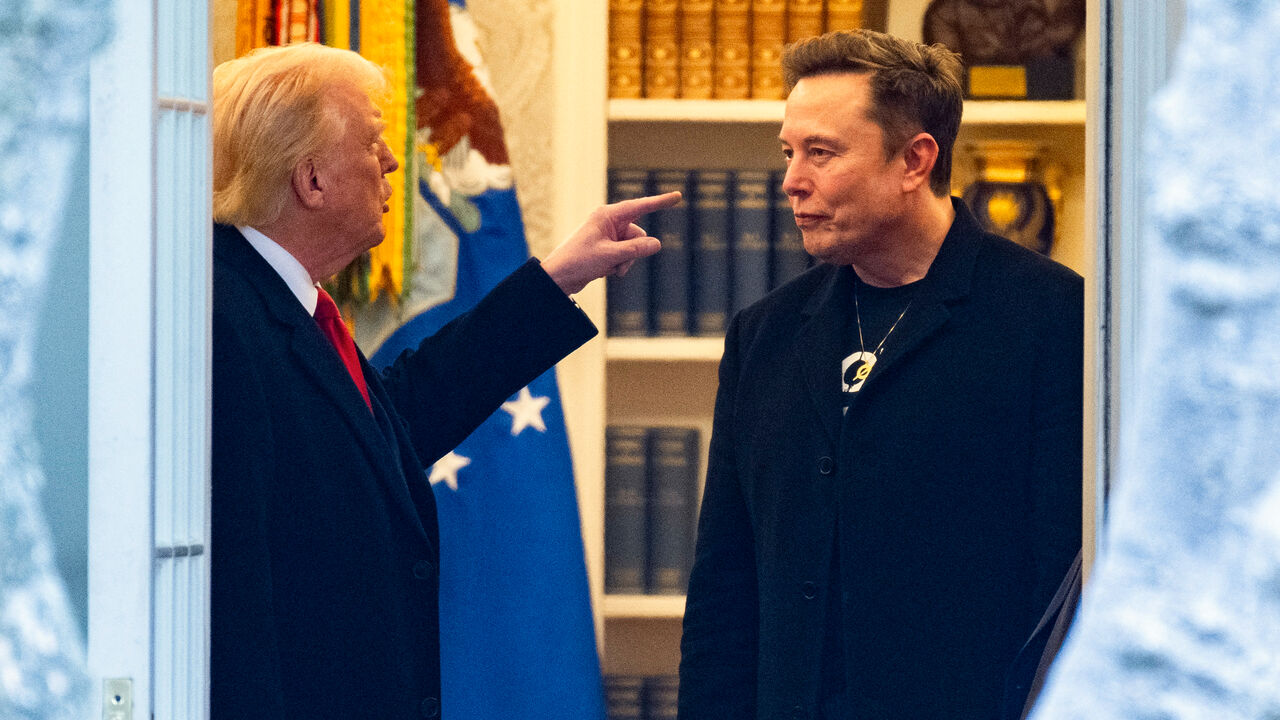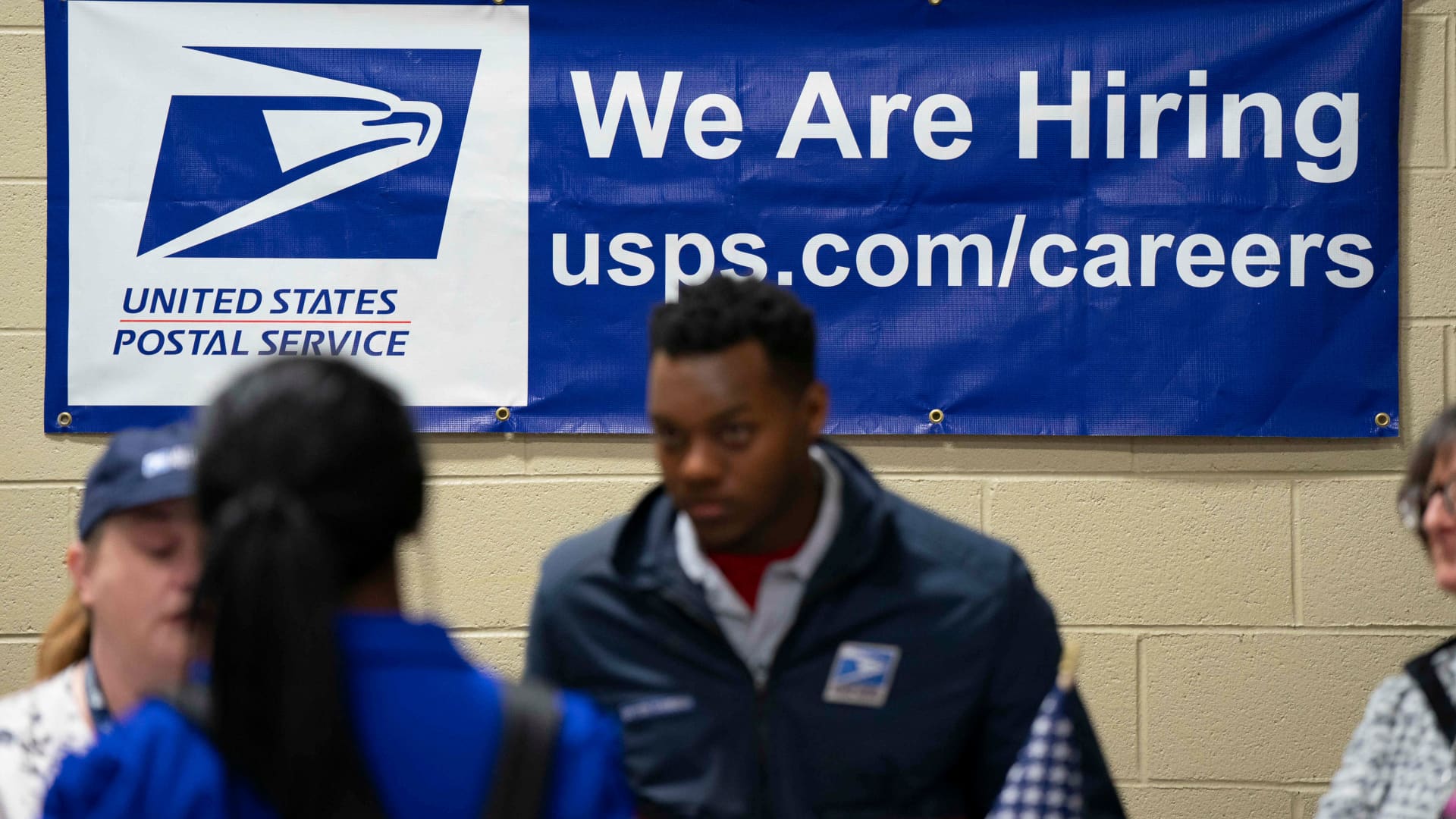A pedestrian crosses a flooded street following heavy rainfall in Paris on October 17, 2024.
Joel Saget | Afp | Getty Images
French lawmakers will hold a no-confidence vote in the fragile minority government of Prime Minister Michel Barnier on Wednesday, as economists warn the political stalemate likely to ensue will come at a high economic cost.
Two so-called “motions of censure” filed by both the left-wing and far-right opposition parties will be debated and voted on from 4 p.m. local time. The administration is widely seen as likely to be ousted, just three months after it was formed. If the government collapses, Barnier — who failed to find compromise within the heavily-divided National Assembly to pass a 2025 budget bill aimed at reducing the hefty French deficit — will then be forced to tender his resignation to President Emmanuel Macron.
From there, uncertainty reigns. Macron will eventually need to name a new prime minister, after already struggling to make such an appointment in the wake of the snap summer election which delivered the most votes to the left-wing coalition, but did not give any party a majority. Long-time minister Barnier had been seen as a technocratic compromise.
“Once Barnier resigns, Macron will likely ask him to continue as a caretaker. The alternative option of formally renominating Barnier looks unlikely given the manifest lack of a majority,” Carsten Nickel, deputy director of research at Teneo, said in a Tuesday note.
This caretaker status could drag on for months, since fresh elections cannot be held until next year, while another possibility is Macron’s resignation triggering presidential elections within 35 days, Nickel said.

He added that such a series of events would leave the budget bill unpassed, with a last-minute deal appearing improbable.
The caretaker government is therefore likely to present a special constitutional law which would “effectively roll over the 2024 accounts without any of the previously envisaged spending cuts or tax hikes, while empowering the government to keep collecting taxes,” he said.
Amid the turmoil, French borrowing costs are climbing while the euro has been caught up in negative sentiment — exacerbated by bleak manufacturing data from the euro area and concurrent political volatility in Germany.
“France is facing a prospect of a growing fiscal deficit that will become more expensive to finance as their [government bond] yields rise amid this uncertainty,” analysts at Maybank said in a note Wednesday.
Deficit challenge
To international investors, the situation in France looks “very bad,” Javier Díaz-Giménez, professor of Economics at Spain’s IESE Business School, told CNBC by phone.
“Without a budget, they really would default, not because they can’t pay interest on their debt, but because they won’t without a budget. Ratings agencies are already putting in warnings, 10-year French bonds have a higher premium than Greece’s, which is crazy in terms of fundamentals,” he said. Greece had briefly lost its investment grade credit rating status amid the euro area debt crisis, which led to the nation’s sovereign default.
“But that’s because pension funds don’t care, they just want an assured steam of revenue with no concerns about legal shenanigans. So they will dump [French bonds] and go elsewhere,” Díaz-Giménez said.
“Beyond economic growth and stability, this will send debt in a non-sustainable direction in France.”
Economists had already trimmed their growth forecasts for France following the publication of the budget proposal in October, given its sweeping tax hikes and public spending cuts.
Analysts at Dutch bank ING, who previously forecast French growth slowing from 1.1% in 2024 to 0.6% in 2025, said Tuesday that the fall of Barnier’s government “would be bad news for the French economy.”
They also predicted the passing of a provisional budget mirroring the 2024 framework.
“Such a budget will not rectify the trajectory of public spending,” they said, throwing out Barnier’s target of reducing the public deficit from 6% of GDP to 5% in 2025 — which would mean France would not move toward meeting the European Union’s new fiscal rules.
“At a time when economic growth in France is slowing markedly, this is bad news. The public deficit will remain high, debt will continue to grow and the next government – whenever that may be – will have an even tougher task to put public finances right,” the ING analysts said.
Gilles Moëc, group chief economist at AXA, observed in a note Monday that “France can count on large reserves of domestic savings to replace international investors, and the euro area dataflow helps to decouple European from US yields, but in the medium run, directing too much of domestic savings to funding the government can become costly in terms of growth dynamics.”
“Consumer confidence has already declined, and the savings rate could rise further, thwarting the rebound in consumption on which the government is counting to support tax receipts in 2025,” Moëc said.
German comparison
While both countries are mired in their political turbulence, the spread between France’s borrowing costs over those of Germany stretched to a fresh 12-year high this month.
However, Díaz-Giménez of IESE Business School said that in some ways, the French outlook was more positive than that of the euro area’s largest economy.
“In France, economic prospects are pretty bleak, but it’s not going to be a disaster if ancillary risks can be avoided. The high fiscal deficit is hard to fix and requires political harmony but they could still find a way through, it just puts pressure on politicians to do their jobs and solve the real problems, in this case fiscal sustainability,” he told CNBC.
“But in Germany the problem is growth. The German economy needs major adaptation to a new environment without Russian gas and in which making cars in Europe looks like a really bad business plan. From an economic point of view, that is harder to solve than the French problem.”

 Economics1 week ago
Economics1 week ago
 Economics1 week ago
Economics1 week ago
 Blog Post6 days ago
Blog Post6 days ago
 Accounting1 week ago
Accounting1 week ago
 Personal Finance1 week ago
Personal Finance1 week ago
 Economics1 week ago
Economics1 week ago
 Personal Finance1 week ago
Personal Finance1 week ago
 Accounting1 week ago
Accounting1 week ago






















